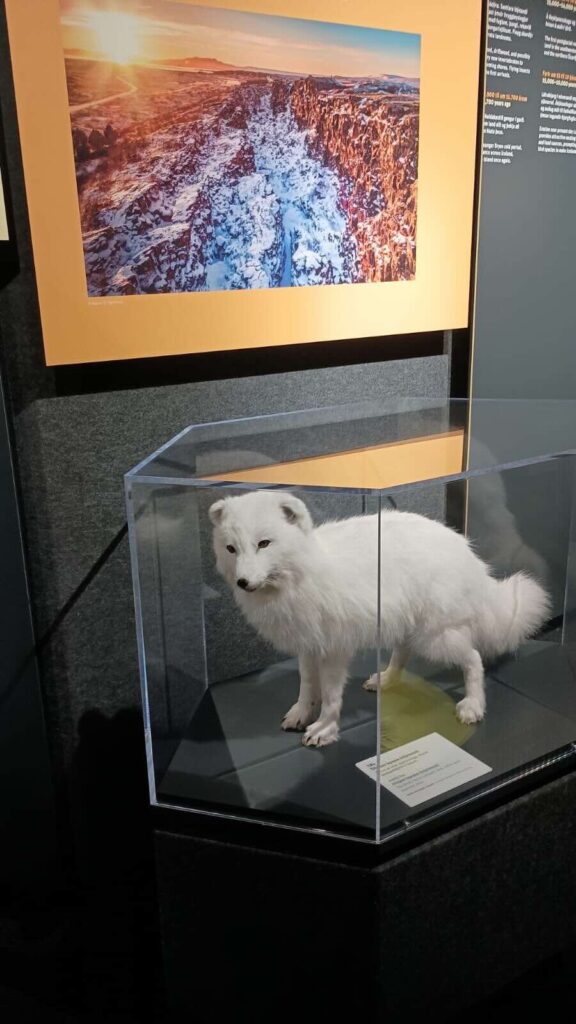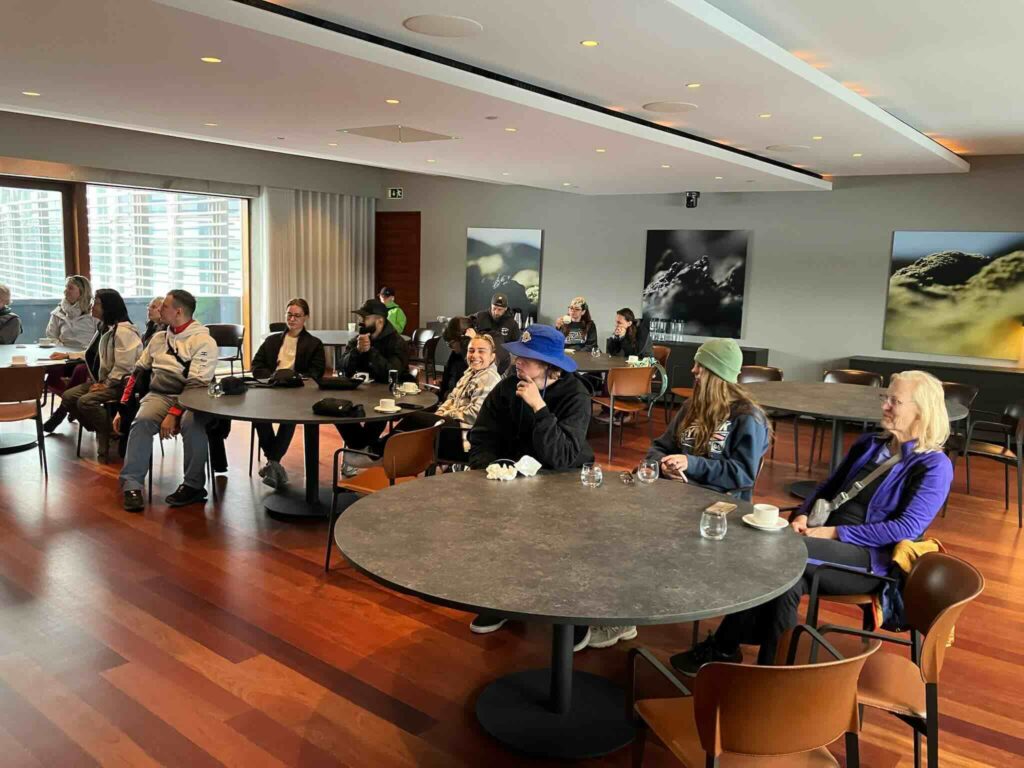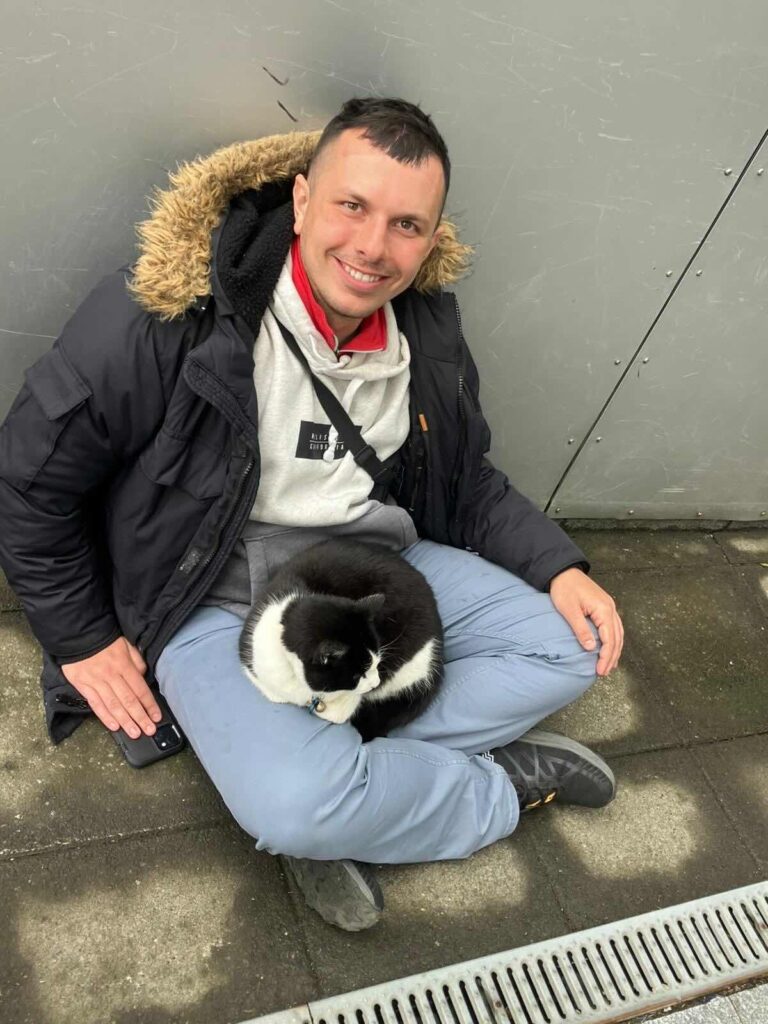


By: Sachiko Komagata
On our departure day, some of us decided to visit Perlan, a museum showcasing the natural wonders of Iceland. It was an easy 15-minute uphill walk from our hotel in Reykjavík. Along the way, we spotted wild rabbits—larger than the ones we see in New Jersey—and patches of vibrant purple lupins, a flower commonly found in Iceland.
Perlan featured a range of exhibits, including photos, models, and a walk-through ice cave. One of the highlights was seeing a real piece of glacial ice from a disappearing Icelandic glacier. We learned the difference between glacier ice and sea ice—at least I did not fully understood before. Since we were visiting in May and couldn’t see the northern lights in the night sky, we enjoyed stunning simulated northern lights show at the museum instead.
A short film about Iceland’s active volcanoes helped connect everything we had seen: the black, rigid piles of lava rock lining the roads, and Grindavik, the abandoned town left behind after the 2010 eruption of Eyjafjallajökull. These exhibits deepened our appreciation for the resilience and environmental consciousness of the Icelandic people.
Some of us noticed a unique, beautiful aroma throughout the museum. When we asked the staff about the ingredients, they said they didn’t know—or couldn’t reveal them. At the gift shop, we discovered two aroma sprays for sale: one called Lava and the other Ísland. Though it was expensive, I purchased the Ísland spray. If you’re curious, stop by my office to experience the scent of Iceland for yourself!
Later, we returned to the Blue Lagoon—not to bathe this time, but to attend a presentation by the Director of Research and Development. We learned about the history, research, and scientific work behind the Blue Lagoon. Early studies focused on the effects of bathing on skin conditions, particularly psoriasis. After numerous publications, the Icelandic government officially recognized the lagoon’s therapeutic benefits. Research has also explored the anti-aging effects of the skin care products developed there, which are made using the lagoon’s unique ingredients: silica, minerals, and microalgae. Although the Blue Lagoon receives 3,000–4,000 visitors daily, its extended operating hours meant it never felt overly crowded during our visits.
Finally, we headed to the airport to catch our flight back to New Jersey. It was an unforgettable journey. We came away with a deep admiration for Iceland’s bathing culture, its emphasis on work-life balance, women’s status in the society, and the resilience and innovation required to thrive amidst active volcanoes.

